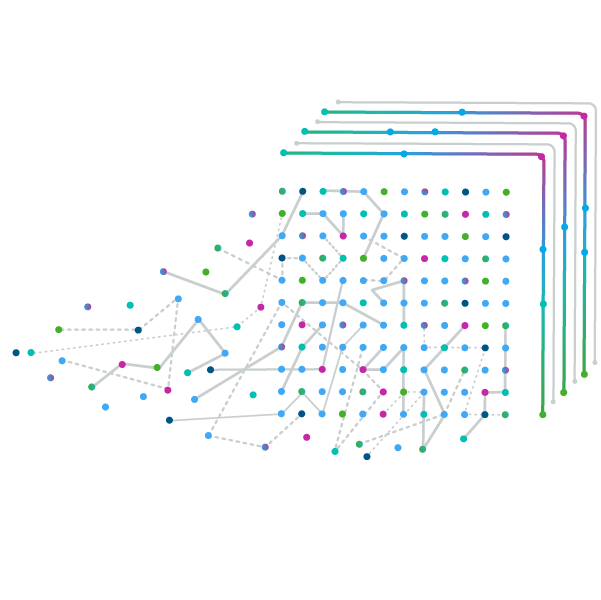-
Americas
-
Asia & Oceania
-
A-I
J-Z

EMEA Thought Leadership
Developing IQVIA’s positions on key trends in the pharma and life sciences industries, with a focus on EMEA.
Learn more -
Middle East & Africa

EMEA Thought Leadership
Developing IQVIA’s positions on key trends in the pharma and life sciences industries, with a focus on EMEA.
Learn more
Regions
-
Americas
-
Asia & Oceania
-
Europe
-
Middle East & Africa
-
Americas
-
Asia & Oceania
-
Europe
Europe
- Adriatic
- Belgium
- Bulgaria
- Czech Republic
- Deutschland
- España
- France
- Greece
- Hungary
- Ireland
- Israel
- Italia

EMEA Thought Leadership
Developing IQVIA’s positions on key trends in the pharma and life sciences industries, with a focus on EMEA.
Learn more -
Middle East & Africa

EMEA Thought Leadership
Developing IQVIA’s positions on key trends in the pharma and life sciences industries, with a focus on EMEA.
Learn more
SOLUTIONS
-
Research & Development
-
Real World Evidence
-
Commercialization
-
Safety & Regulatory Compliance
-
Technologies
LIFE SCIENCE SEGMENTS
HEALTHCARE SEGMENTS
- Information Partner Services
- Financial Institutions
- Global Health
- Government
- Patient Associations
- Payers
- Providers
THERAPEUTIC AREAS
- Cardiovascular
- Cell and Gene Therapy
- Central Nervous System
- GI & Hepatology
- Infectious Diseases and Vaccines
- Oncology & Hematology
- Pediatrics
- Rare Diseases
- View All

Impacting People's Lives
"We strive to help improve outcomes and create a healthier, more sustainable world for people everywhere.
LEARN MORE
Harness the power to transform clinical development
Reimagine clinical development by intelligently connecting data, technology, and analytics to optimize your trials. The result? Faster decision making and reduced risk so you can deliver life-changing therapies faster.
Research & Development OverviewResearch & Development Quick Links

Real World Evidence. Real Confidence. Real Results.
Generate and disseminate evidence that answers crucial clinical, regulatory and commercial questions, enabling you to drive smarter decisions and meet your stakeholder needs with confidence.
REAL WORLD EVIDENCE OVERVIEWReal World Evidence Quick Links

See markets more clearly. Opportunities more often.
Elevate commercial models with precision and speed using AI-driven analytics and technology that illuminate hidden insights in data.
COMMERCIALIZATION OVERVIEWCommercialization Quick Links

Service driven. Tech-enabled. Integrated compliance.
Orchestrate your success across the complete compliance lifecycle with best-in-class services and solutions for safety, regulatory, quality and medical information.
COMPLIANCE OVERVIEWSafety & Regulatory Compliance Quick Links

Intelligence that transforms life sciences end-to-end.
When your destination is a healthier world, making intelligent connections between data, technology, and services is your roadmap.
TECHNOLOGIES OVERVIEWTechnology Quick Links
CLINICAL PRODUCTS
COMMERCIAL PRODUCTS
COMPLIANCE, SAFETY, REG PRODUCTS
BLOGS, WHITE PAPERS & CASE STUDIES
Explore our library of insights, thought leadership, and the latest topics & trends in healthcare.
DISCOVER INSIGHTSTHE IQVIA INSTITUTE
An in-depth exploration of the global healthcare ecosystem with timely research, insightful analysis, and scientific expertise.
SEE LATEST REPORTSFEATURED INNOVATIONS
-
IQVIA Connected Intelligence™
-
IQVIA Healthcare-grade AI®
-
IQVIA AI Assistant
-
Human Data Science Cloud
-
IQVIA Innovation Hub
-
Decentralized Trials
-
Patient Experience Solutions with Apple devices
WHO WE ARE
- Our Story
- Our Impact
- Commitment to Global Health
- Code of Conduct
- Sustainability
- Privacy
- Executive Team
NEWS & RESOURCES

Unlock your potential to drive healthcare forward
By making intelligent connections between your needs, our capabilities, and the healthcare ecosystem, we can help you be more agile, accelerate results, and improve patient outcomes.
LEARN MORE
IQVIA AI is Healthcare-grade AI
Building on a rich history of developing AI for healthcare, IQVIA AI connects the right data, technology, and expertise to address the unique needs of healthcare. It's what we call Healthcare-grade AI.
LEARN MORE
Meet the IQVIA AI Assistant
Your new expert analyst is here. Be at the forefront of data-driven decision-making with a new generative AI tool that enables you to interact with our products and solutions like never before. Get results you can trust, faster.
LEARN MORE
Your healthcare data deserves more than just a cloud.
The IQVIA Human Data Science Cloud is our unique capability designed to enable healthcare-grade analytics, tools, and data management solutions to deliver fit-for-purpose global data at scale.
LEARN MORE
Innovations make an impact when bold ideas meet powerful partnerships
The IQVIA Innovation Hub connects start-ups with the extensive IQVIA network of assets, resources, clients, and partners. Together, we can help lead the future of healthcare with the extensive IQVIA network of assets, resources, clients, and partners.
LEARN MORE
Proven, faster DCT solutions
IQVIA Decentralized Trials deliver purpose-built clinical services and technologies that engage the right patients wherever they are. Our hybrid and fully virtual solutions have been used more than any others.
LEARN MORE
IQVIA Patient Experience Solutions with Apple devices
Empowering patients to personalize their healthcare and connecting them to caregivers has the potential to change the care delivery paradigm.
LEARN MOREIQVIA Careers
Featured Careers
Stay Connected

WE'RE HIRING
"At IQVIA your potential has no limits. We thrive on bold ideas and fearless innovation. Join us in reimagining what’s possible.
VIEW ROLES- Blogs
- Antisense therapies in dyslipidemias
Background
Primary dyslipidemia is a genetic metabolic condition characterized by abnormalities of the lipid profile constituted by cholesterol, triglycerides (TG), and lipoprotein of five major classes: chylomicrons, very-low-density lipoproteins (VLDL), intermediate-density lipoproteins (IDL), low-density lipoproteins (LDL) and high-density lipoproteins (HDL). Dysregulation of lipoprotein and lipid metabolism is the greatest contributor of the development of atherosclerosis and coronary artery disease.
Some patients using standard statin therapy alone or in combination with other lipid lowering therapies are not able to achieve their LDL cholesterol (LDL-C) reduction goal, particularly patients with homozygous familial hypercholesterolemia. Hence, there is a need for alternative and adjunct therapeutic strategies for these patients and gene silencing approaches by antisense oligonucleotides (ASOs) and small interfering RNAs (siRNAs) have proven to be effective treatment options.
Familial hypercholesterolemia is caused by mutations in the following three genes relevant to plasma LDL metabolism: low-density lipoprotein cholesterol receptor (LDLR), apolipoprotein B100 (ApoB-100) and proprotein convertase subtilisin/kexin type 9 (PCSK9). Because gene silencing achieves inhibition of the production of selected proteins, specific therapies have been developed exploiting the target biology and knowledge of the lipid metabolism underlying the disorder. The targets investigated thus far, and the antisense therapies developed against these targets according to Pipeline Intelligence will be reviewed.
Targets of antisense therapies in lipid disorders
ApoB-100
ApoB-100 is an essential protein for the production of pro-atherogenic lipoproteins, namely VLDL, LDL and lipoprotein A. High levels of ApoB-100, especially associated with the higher LDL levels, is a primary driver for cardiovascular disease.
Apo(a)
Apolipoprotein (a) [Apo(a)] which is bound to ApoB-100 via a disulfide bond, leads to the formation of lipoprotein (a) [Lp(a)], a cholesterol-rich LDL-like particle. Lp(a) is a key driver for cardiovascular disease due to its association with an increased risk of coronary heart disease. Therefore, drugs that can lower Lp(a) levels by targeting Apo(a) are being developed.
ApoCIII
Apolipoprotein CIII (ApoCIII) is a 79-amino acid glycoprotein synthesized in the liver that has a role in the regulation of TG levels. ApoCIII is present on TG rich lipoproteins, such as VLDL. ApoCIII impairs clearance of these particles by inhibition of the enzyme lipoprotein lipase (LPL). It is also known to delay clearance of TG-rich lipoproteins. ApoCIII may also play a role in the activity of hepatic lipase and assembly and secretion of TG-rich lipoproteins. Therefore, ApoCIII plays a key role directly and indirectly in the pathogenesis of atherosclerosis and is being explored as a therapeutic target for hypertriglyceridemia.
PCSK9
PCSK9 promotes the degradation of LDL receptors and consequently increases levels of LDL-C in serum and eventually premature cardiovascular disease. Conversely, loss-of-function mutations are accompanied by decreased levels of LDL-C and a decreased risk of cardiovascular disease.
ANGPTL3
Angiopoietin-like 3 protein (ANGPTL3) is a liver synthesized inhibitor of lipoprotein lipase and endothelial lipase. ANGPTL3 inhibition has been shown to lower serum LDL, serum and liver TG levels.
The landscape of antisense therapies for lipid disorders according to Pipeline Intelligence is presented in Figure 1.

Conclusion
Despite the use of first-line statin therapy, many patients with familial hypercholesterolemia fail to achieve optimal reductions of LDL-C levels or are unable to tolerate statins. ASOs and siRNAs have proven to be effective as adjunct or alternate therapies in these patients.
Register to the INNsight Newsletter for regular patent, pipeline and conference updates.











